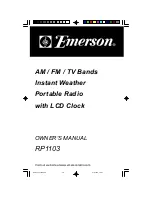
41
possibly be found in PVC wire coatings of our cables, housings, and power cords. Unlike RoHS, Prop 65 does not
establish a specific threshold for reporting on the substances of concern and instead sets forth a much less definitive
standard requiring that the business demonstrate with certainty that there is "no significant risk" resulting from exposure.
With respect to carcinogens, the "no significant risk" level is defined as the level which is calculated to result in not more
than one excess case of cancer in 100,000 individuals exposed over a 70-year lifetime. In other words, if you are exposed
to the chemical in question at this level every day for 70 years, theoretically, it will increase your chances of getting
cancer by no more than 1 case in 100,000 individuals so exposed. With respect to reproductive toxicants, the "no
significant risk" level is defined as the level of exposure which, even if multiplied by 1,000, will not produce birth
defects or other reproductive harm. In other words, the level of exposure is below the "no observable effect level,"
divided by 1,000. (The "no observable effect level" is the highest dose level which has not been associated with
observable reproductive harm in humans or test animals.) Proposition 65 does not clarify whether exposure is to be
measured only in normal operation, or in the event of misuse such as intentionally damaging, incinerating or
consuming an Ambient Weather Product or component and Ambient Weather has not attempted to evaluate the level of
exposure.
A Proposition 65 warning means one of two things: (1) the business has evaluated the exposure and has concluded that it
exceeds the "no significant risk level"; or (2) the business has chosen to provide a warning simply based on its
knowledge about the presence of a listed chemical without attempting to evaluate the exposure. The California
government has itself clarified that "The fact that a product bears a Proposition 65 warning does not mean by itself that
the product is unsafe." The government has also explained, "You could think of Proposition 65 more as a 'right to know'
law than a pure product safety law."
While using Ambient Weather Products as intended, we believe any potential exposure would be negligible or well
within the "no significant risk" range. However, to ensure compliance with California law and our customers'
right to know, we have elected to place the Proposition 65 warning signs on Ambient Weather Products.
For further information about California's Proposition 65, please
visit
https://oehha.ca.gov/prop65/background/p65plain.html

































